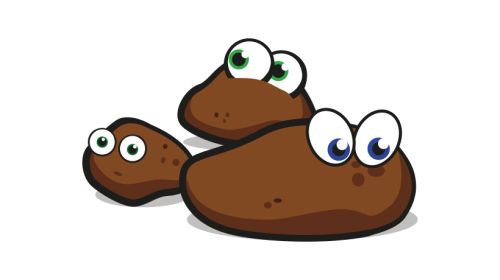Ulcerative colitis is a chronic inflammation of the colon that progresses in episodes. Typical symptoms are bloody diarrhea and abdominal pain. The symptoms can usually be alleviated with medication and the right diet.
- Colic-like abdominal pain is a typical symptom of ulcerative colitis.
- © iStock.com/svetikd
Quick overview: Frequently asked questions and answers
How does ulcerative colitis manifest itself? Typical symptoms include persistent diarrhea, often with blood or mucus, abdominal pain, abdominal cramps, frequent urge to defecate, and weight loss. Fatigue and fever may also occur.
Is ulcerative colitis curable? There is currently no cure for ulcerative colitis. With appropriate treatment, many people can achieve a good quality of life and control symptoms.
What causes ulcerative colitis? The exact cause is unknown. Experts believe that a combination of genetics, immune system reactions and environmental factors play a role. Stress can worsen symptoms, but is not considered a trigger.
What influence does diet have on ulcerative colitis? Some people find that certain foods make their symptoms worse. An individually tailored diet can help minimize symptoms.
Article contents at a glance:
What is ulcerative colitis?
Ulcerative colitis is a chronic inflammatory bowel disease (IBD). The inner layer of the intestinal mucosa becomes inflamed and forms ulcers. Unlike Crohn’s disease, the inflammation is limited to the large intestine (colon) and the outermost layer of the intestinal wall.
Chronic colon inflammation usually begins in the rectum and spreads to different extents into the intestines. Once it reaches the appendix, the disease stops.
In Germany, around 170,000 people suffer from ulcerative colitis. The disease usually begins between the ages of 15 and 35.
Ulcerative colitis: forms of intestinal disease
Depending on the degree of spread, experts differentiate between different forms:
Ulcerative proctitis: Only the rectum is affected.
Proctosigmoiditis: The rectum and the lower part of the large intestine (sigmoid colon) are inflamed.
left-sided colitis: There is inflammation up to the left curvature (flexure) of the colon.
Pancolitis: The entire colon is inflamed.
In the very rare case of backwash ileitis, the disease has spread to the last sections of the small intestine.
Ulcerative colitis: symptoms of the disease
The severity of the symptoms of ulcerative colitis depends on the degree of inflammation and how many parts of the intestine are affected. In a mild form, those affected only suffer from occasional diarrhea with little blood and mucus. An extensive illness, on the other hand, causes severe symptoms.
Typical symptoms of ulcerative colitis:
- Diarrhea
- Blood and mucus in the stool
- increased urge to defecate (tenesmus)
- nocturnal fecal incontinence
- colicky abdominal pain, abdominal cramps
- Defensive tension in the stomach
- Racing heartbeat (tachycardia)
- unwanted weight loss
- weakened bowel sounds
- Fever
- general weakness, tiredness
Signs outside the intestines
In many patients, the inflammation is not limited to the intestines, but instead manifests itself in so-called extra-intestinal symptoms. The eyes, skin and joints are often affected:
Possible complications
The more frequently bloody diarrhea caused by ulcerative colitis occurs, the higher the risk of developing anemia and other nutritional deficiencies. Because of persistent diarrhea, the body cannot properly absorb important nutrients such as vitamins and minerals.
Other complications of ulcerative colitis include:
pathological expansion of the large intestine (toxic megacolon) with intestinal paralysis
Bile ducts in the liver become inflamed and scarred (primary sclerosing cholangitis)
Osteoporosis (bone loss)
Connecting ducts from the intestine to neighboring tissue or to the skin (fistulas)
The disease can also increase the risk of colon cancer. That’s why regular check-ups are important in order to be able to detect changes at an early stage. They should begin approximately six to eight years after diagnosis.
Chronic course of colitis in episodes
What is characteristic of ulcerative colitis is its intermittent progression. In the times between attacks, which can last several months and even years, many affected people are usually symptom-free. During these remission phases, patients can lead a largely normal everyday life.
An acute attack often leads to severe restrictions in everyday life and worsens the quality of life. These flare-ups can usually be easily treated with medication. In severe cases, hospital treatment may be necessary.
Effects on the desire to have children?
Ulcerative colitis has no known effect on fertility. Women who want to have children can therefore usually become pregnant without any restrictions. However, an acute attack can increase the risk of premature birth and miscarriage (abortion).
Therefore, pregnancy should, if possible, occur during the remission phase – this applies to the natural route as well as artificial insemination. Those affected should therefore talk to their doctor as openly as possible about their intestinal disease and their desire to have children.
Therapy of ulcerative colitis
The chronic intestinal disease ulcerative colitis cannot be cured. However, with the help of medication, the symptoms can be alleviated and the inflammation can be reduced.
First, medications containing the anti-inflammatory drug mesalazine are usually administered. Mesalazine is considered to have few side effects and can be administered orally or rectally (suppositories, enema or foam). It is suitable for long-term treatment in order to delay a new attack of the disease and to remain symptom-free for as long as possible (maintenance therapy).
If treatment with mesalazine does not work, preparations containing cortisone (glucocorticoids) are administered. Treatment is local (rectal) or systemic (oral or intravenous). Glucocorticoids are not suitable for maintenance therapy as they can be associated with significant side effects.
Treatment of severe disease attacks
In very severe attacks of ulcerative colitis, preparations containing the active ingredient azathioprine are used in addition to or instead of cortisone. Azathioprine inhibits the activity of the immune system. However, it only works after three to six months of regular use.
If drug treatment is unsuccessful, surgery may be necessary. The affected sections, but usually the entire colon, are removed. An artificial rectum is then constructed from the small intestine, which takes over the function of the removed rectum (ileoanal pouch operation). The small intestine is then connected to the anus.
Fecal transplantation offers a new treatment option for ulcerative colitis. It is based on the transfer of stool from healthy people into the intestines of sick people. The goal is to change the microbial balance in the recipient’s gut to reduce inflammation and improve symptoms of ulcerative colitis.
Taking herbal ingredients?
Curcumin is a natural pigment found in the roots of the medicinal plant turmeric. It has an anti-inflammatory effect that has been proven in studies. There is evidence that turmeric can be used alongside drug therapy to bring the disease into a resting phase.
However, the bioavailability of the natural substance is low, so the body can only absorb small amounts of the active ingredients. Before taking appropriate preparations, those affected should consult a doctor.
Nutrition for ulcerative colitis
People with chronic colon inflammation should pay attention to a balanced diet to prevent nutrient deficiencies. Which foods are tolerated in ulcerative colitis varies from person to person.
In general, easily digestible fiber, such as that found in tender oat flakes and other finely ground whole grain products, has proven to be effective in the remission phase. Flatulent foods such as cabbage and legumes are often less well tolerated than vegetables such as parsnips, carrots or zucchini. Fermented milk products such as yogurt or kefir as well as poultry, fish and high-quality vegetable oils are also considered wholesome.
During a flare-up, a tolerable diet is usually different. Those affected should avoid high-fiber foods, raw vegetables, undiluted juices and carbonated drinks and pay attention to a low-fat diet. The food should not be too sour, too spicy or very sugary.
Causes of ulcerative colitis
The causes of ulcerative colitis are unknown. Similar to Crohn’s disease, the trigger is thought to be a genetically determined, pathological immune reaction of the body against the intestinal flora.
Since ulcerative colitis is more common in industrialized countries than in less industrialized countries, researchers also assume that various environmental factors such as hygiene and diet play a role in the development of ulcerative colitis.
According to current knowledge, ulcerative colitis is not psychosomatic. However, stress and mental stress can promote or even trigger flare-ups. This can have a negative impact on the course of the disease.
Diagnosing ulcerative colitis
As the first step in diagnosing ulcerative colitis, the doctor conducts a detailed discussion (anamnesis) with those affected. What is particularly important are existing symptoms, their duration and any existing co-morbidities.
The physical examination then takes place. The abdominal cavity is palpated for possible pressure pain and the color of the skin and mucous membranes is examined. To rule out other diseases in the rectum such as hemorrhoids, the anal canal can be felt with your finger.
A bacterial infection can be ruled out with a stool sample. Blood values (C-reactive protein, CRP and increased erythrocyte sedimentation rate, ESR) as well as calprotectin in the stool can be used to determine how severe the inflammation and bleeding are.
Colonoscopy is important for diagnosis
To confirm the diagnosis and determine the type and severity of the inflammation, a colonoscopy is performed, during which tissue samples of the intestinal mucosa (biopsy) are taken at the same time. In addition, an ultrasound examination (sonography) can be carried out to identify the location of the inflammation in the colon.
In unclear cases, magnetic resonance imaging (MRI) can be used to differentiate ulcerative colitis from Crohn’s disease. This can detect possible inflammation of the small intestine.



